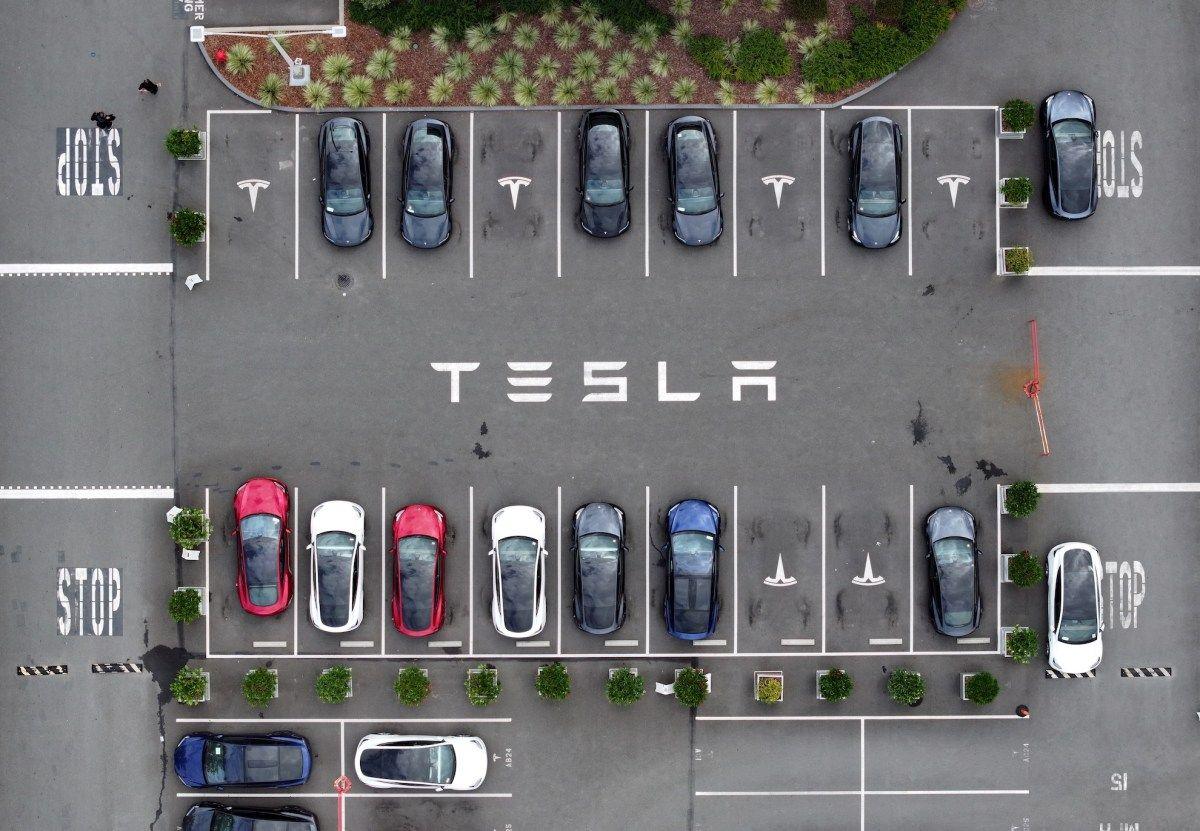NVIDIA's Rubin Platform: Next-Gen AI Architecture Set for 2026 Launch
5 Sources
5 Sources
[1]
Nvidia's Rubin GPU and Vera CPU data center AI platforms begin tape out -- both chips 'in fab' and on track for 2026
Collette Cress, chief financial officer of Nvidia, has said that the company's next-generation data center-grade GPU codenamed Rubin and CPU, codenamed Vera have been taped out and were 'in fab,' which means that their silicon is currently being produced by TSMC. The announcement indicates that Nvidia's next-generation data center platform for AI is on track for introduction in 2026. "The chips of the Rubin platform are in fab," said Collette Kress during the company's earnings conference call with financial analysts and investors. "The Vera CPU, Rubin GPU, CX9 Super NIC, NVLink 144 scale-up switch, Spectrum X scale-out and scale-across switch, and the silicon photonics processor [for co-packages optics]. Rubin remains on schedule for volume production next year." Having all the chips for the Rubin NVL144 rack-scale platform in the fab indicates that they have passed the important tape-out stage and Nvidia is now awaiting them in its labs to verify that they meet its performance, power, costs, and other targets. Tape-out is a crucial milestone in semiconductor manufacturing when the final and verified chip design is sent from the design team to a chip producer for manufacturing. This stage marks completion of the physical design place-and-route process, where the chips layout has been fully optimized for performance, power, area, timings, and has passed all verification checks. Nvidia tends to simulate its designs using its own supercomputers to ensure that the very first silicon the company gets back from the fab works and achieves performance and power milestones. At tape-out, the design is converted into a format that contains the exact geometric patterns of transistors and interconnects. This file is then used by chipmakers like TSMC to create photomasks, which are then used to make actual chips. Since mask creation is extremely costly (often tens of millions of dollars for advanced nodes), tape-out represents a critical milestone, which indicates that both logic design works as planned and the actual chip design has been simulated with acceptable results. If mistakes are discovered after the mask printing stage, it almost certainly requires a new re-spin and tape-out, adding months of delay and tens of millions of dollars costs. So far, Nvidia's partners have successfully created photomasks and put Nvidia's Rubin GPU, Vera CPU, and various scale-up and scale-out switching ASICs to production. As soon as the company gets actual chips back from TSMC, it will begin bring up and debug processes. Typically, if everything is fine with the first silicon implementation and no re-spins and tape-outs are required, a complex chip may enter production in 9 - 12 months. However, given that we are talking about a platform consisting of multiple chips, it will take some additional time for Nvidia and its partners to verify that all the processors work in concert as planned.
[2]
NVIDIA CEO says Rubin GPU is the company's 'most advanced' AI architecture, cooking at TSMC now
NVIDIA CEO Jensen Huang has confirmed that his company has six different Rubin chips in the ovens at TSMC, gearing up for trial production right now. Jensen is in Taiwan right now for important meetings with key executives at TSMC, with local Taiwanese media talking to Jensen who confirmed that NVIDIA has already taped out six different Rubin chips -- including new CPUs and GPUs -- and that they're at TSMC being prepared for trial production. The NVIDIA CEO mentioned that the new Rubin chips include a dedicated CPU, GPU, scale-up NVLink Switch, and a new silicon photonics processor, which means the entire stack is getting a huge Rubin-infused upgrade. Rubin is a different beast to Blackwell and Hopper, as the changes to Rubin are from the ground up: HBM, the process node, design, and more. Jensen said: "My main purpose is to visit TSMC as you know we have a next generation architecture called Rubin, and Rubin is very advanced and we have now taped out six brand new chips to TSMC, so all of these chips are now in TSMC's fabs". NVIDIA's next-gen Rubin R100 AI GPU will feature next-gen HBM4 memory which is a huge upgrade over HBM3E used inside of the Blackwell B200 and B300 chips, with the company also using TSMC's new 3nm process node (N3P) and CoWoS-L advanced packaging. Rubin also shifts into a new chiplet design, which is a first-of-its-kind implementation for NVIDIA, and a 4x reticle design (compared to 3.3x reticle on Blackwell). Rubin is expected to debut sometime in 2026 if there are no issues, with the big reveal said to happen at NVIDIA's upcoming GTC Washington D.C. event in October 2025, so we're not far away now at all. If Rubin doesn't make its big appearance at GTC Washington D.C. then we should expect some more news either at CES 2026 in January, or GTC 2026 in March next year.
[3]
NVIDIA confirms next-gen Rubin AI GPUs with HBM4 are in the fab, volume production in 2H 2026
TL;DR: NVIDIA CEO Jensen Huang confirmed Rubin AI GPUs and five other advanced chips are in production at TSMC, targeting volume release in the second half of 2026. Rubin will be NVIDIA's third-generation NVLink rack-scale AI supercomputer, supporting a $3-4 trillion global AI infrastructure growth by decade's end. NVIDIA CEO Jensen Huang has confirmed that its next-generation Rubin AI GPUs are already in the fabs, and are aiming for volume production in the second half of 2026, after it posted another quarter of record revenue hitting $46.7 billion. During its recent Q2 2026 earnings call, Jensen confirmed Rubin and its 5 other chips -- Vera CPU, CX9 SuperNIC, Spectrum-X, scale Silicon Photonics processor, and NVLINK 144 switch, are in the fabs at TSMC right now, and will launch in 2026. NVIDIA confirmed that all of these new chips will be ready for volume production in 2H 2026. Jensen said: "The chips of the Rubin platform are in fab, the Vera CPU, Rubin GPU, CX9 SuperNIC, NVLink 144 scale up switch, Spectrum-X scale out and scale across switch, and the silicon photonics processor. Rubin remains on schedule for volume production next year. Rubin will be our third-generation NVLink rack scale AI supercomputer with a mature and full-scale supply chain. This keeps us on track with our pace of an annual product cadence and continuous innovation across compute, networking, systems and software". He continued: "Our next platform Rubin, is already in fab. We have 6 new chips that represent the Rubin platform. They have all ticked up at TSMC. Rubin will be our third-generation NVLink rack scale AI supercomputer. And so we expect to have a much more mature and fully scaled up supply chain. Blackwell and Rubin AI factory platforms will be scaling into the $3 trillion to $4 trillion global AI factory build out through the end of the decade". Jensen said that NVIDIA's next-gen Rubin platform will be the company's 3rd Gen NVLink rack-scale AI supercomputer, featuring a fully mature and full-scale supply chain. NVIDIA expects that over the next 5 years the company will scale Blackwell, Rubin, and future-gen architectures into a $3 trillion to $4 trillion AI infrastructure opportunity. Jensen added that Rubin will sport a slew of new ideas and that he's excited to deep dive into them at GTC 2026.
[4]
NVIDIA CEO Jensen Huang Confirms Rubin AI Chip Is Being Prepped at TSMC, the Company's Most Advanced Architecture to Date
NVIDIA's Jensen Huang has confirmed that his firm is now working on the next-gen Rubin AI architecture, which is deemed a 'revolution' for the compute markets. Team Green is currently operating at a vicious product cycle, given that the firm just a few months ago introduced 'Blackwell Ultra' GB300 AI servers, and now, the firm is looking at the next generation. For those unaware, NVIDIA's CEO Jensen Huang is currently on a visit to Taiwan, where his focus will be specifically on Rubin's progress at TSMC. Speaking with the local media, Jensen revealed that NVIDIA has already taped out six different Rubin chips, including new CPUs and GPUs, and they are now under TSMC and being prepped for trial production. My main purpose is to visit TSMC as you know we have a next generation architecture called Rubin, and Rubin is very advanced and we have now taped out six brand new chips to TSMC, so all of these chips are now in TSMC's fabs. Jensen mentions that new chips include a dedicated CPU, GPU, scale-up NVLink Switch, and a new silicon photonics processor, which means that the whole tech stack will undergo a massive upgrade. NVIDIA's Rubin architecture is seen as the next leap in computing capabilities since Team Green is expected to make changes from the ground up, starting with HBM, process node, design, and much more. The Rubin architecture is expected to witness fundamental changes, which we'll discuss ahead. The firm will utilize the next-generation HBM4 chips to power its R100 GPUs, which are said to be a significant upgrade from the modern-day HBM3E standard. Team Green will also adopt TSMC's 3nm (N3P) process and CoWoS-L packaging. More importantly, Rubin will adopt a chiplet design, a first-of-a-kind NVIDIA implementation, and a 4x reticle design (versus 3.3x of Blackwell). So when you look at it, Rubin will make an impact similar to what Hopper did, in terms of generational leap. In terms of when Rubin will debut in the market, we are expecting a 2026-2027 timeline, depending upon when the company completes trial production. But the anticipation around NVIDIA's Rubin makes it clear that the architecture will be a massive launch by Team Green.
[5]
NVIDIA's Cutting-Edge Rubin AI Chips Could Roll Out From TSMC By Year-End, As Jensen Sets a Pace No Rival Can Match
NVIDIA's next-gen Rubin architecture is expected to come out from TSMC's fabs as soon as Q4 2025, which means a new lineup has dropped in just six months from the previous one. When you look at Team Green's product cycle, the firm is currently unmatched mainly since the company has just ramped up Blackwell Ultra GB300 server production, and now, we are already talking about the transition to a newer architecture. NVIDIA's CEO Jensen Huang recently revealed that six different Rubin chips are currently being taped out at TSMC, and now, according to the analyst @dnystedt, it is being reported that fully functional Rubin chips could come out from TSMC's fabs as soon as year-end, ready for customer deployment. This is simply top-tier stuff from NVIDIA, considering that Rubin is claimed to be one of the firm's most advanced architectures, integrating components and elements that are entirely newer standards for the industry. The Vera Rubin platform, which is both the newer CPU and the GPU, is claimed to feature TSMC's N3P process along with CoWoS-L packaging. More importantly, it will be Team Green's transition towards chiplet-based designs for its AI architecture, which will likely put the firm on par with any competition coming from AMD. Rubin's I/O die is claimed to feature TSMC's N5B (5nm) process, and will also have 12-Hi HBM4 chips attached through the CoWoS-L packaging. The Vera CPUs will feature both TSMC N3P and N3B, and will be the first NVIDIA-ARM CPU to feature a chiplet design as well, which is why we say that Rubin will come with advancements from the ground up and in every department. The demand is projected to be similar to what NVIDIA saw when it transitioned from Ampere to Hopper, and given the improvements with Vera Rubin, we should expect huge stuff for Team Green. NVIDIA recently reported its Q2 earnings, and Jensen Huang claimed that the AI compute markets are scaling up to be a $3 trillion to $4 trillion segment. Judging by his estimates, Rubin will play a vital role. Interestingly, TSMC is going to be busier than ever taping out Rubin chips since the Taiwan giant is handling every element from semiconductors to packaging. The future is bright for NVIDIA's AI frenzy, which is expected to be boosted by the Vera Rubin platform.
Share
Share
Copy Link
NVIDIA's next-generation Rubin platform, including advanced GPUs and CPUs, has entered production at TSMC. This marks a significant milestone in AI chip development, with volume production scheduled for 2026.
NVIDIA's Next-Gen Rubin Platform Enters Production
NVIDIA, the leading AI chip manufacturer, has announced that its next-generation data center AI platform, codenamed Rubin, has entered production at Taiwan Semiconductor Manufacturing Company (TSMC). This marks a significant milestone in the development of advanced AI chips, with NVIDIA's CEO Jensen Huang confirming that six different Rubin chips have been taped out and are now in TSMC's fabs
1
.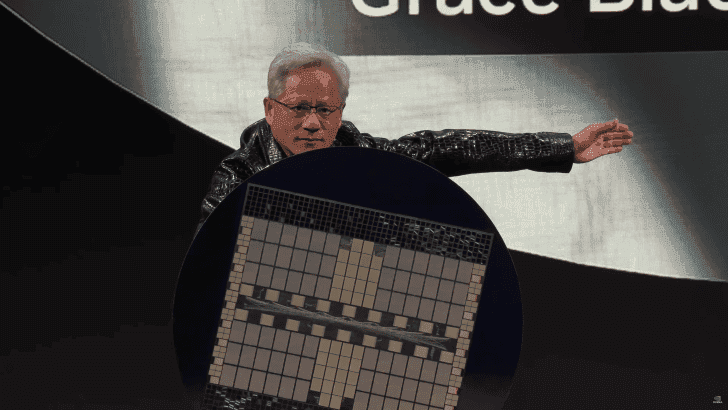
Source: Wccftech
Key Components of the Rubin Platform
The Rubin platform consists of several cutting-edge components:
- Rubin GPU: NVIDIA's most advanced AI architecture to date
- Vera CPU: A new ARM-based processor
- CX9 Super NIC: An advanced network interface card
- NVLink 144 scale-up switch
- Spectrum X scale-out and scale-across switch
- Silicon photonics processor for co-packaged optics
2
Technological Advancements
The Rubin platform introduces several technological improvements:
- HBM4 Memory: The Rubin R100 AI GPU will feature next-generation HBM4 memory, a significant upgrade from the HBM3E used in current Blackwell chips
2
. - Advanced Process Node: Rubin will utilize TSMC's new 3nm process node (N3P)
4
. - CoWoS-L Packaging: The platform will employ TSMC's advanced Chip-on-Wafer-on-Substrate with Local Silicon Interconnect (CoWoS-L) packaging technology
4
. - Chiplet Design: Rubin marks NVIDIA's first implementation of a chiplet-based design, allowing for more flexible and efficient chip architecture
5
.
Related Stories
Production Timeline and Market Impact
NVIDIA has confirmed that the Rubin platform is on track for volume production in the second half of 2026
3
. This timeline aligns with the company's annual product cadence and continuous innovation across compute, networking, systems, and software.Jensen Huang, NVIDIA's CEO, stated:
"Rubin will be our third-generation NVLink rack-scale AI supercomputer with a mature and full-scale supply chain. This keeps us on track with our pace of an annual product cadence and continuous innovation across compute, networking, systems and software"
3
.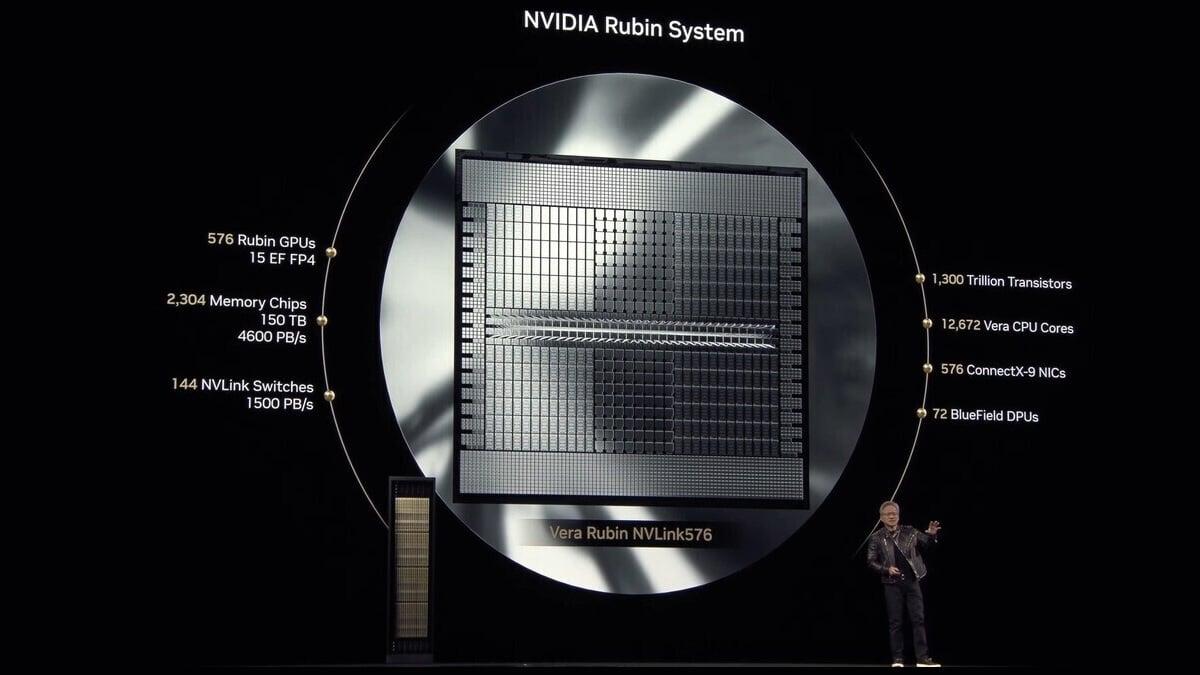
Source: TweakTown
Market Projections and Industry Impact
NVIDIA expects the Rubin platform, along with its current Blackwell architecture, to play a crucial role in the expanding AI infrastructure market. The company projects that these platforms will contribute to a $3 trillion to $4 trillion global AI infrastructure build-out through the end of the decade
3
.The rapid development and production of the Rubin platform demonstrate NVIDIA's commitment to maintaining its leadership position in the AI chip market. With these advancements, NVIDIA aims to stay ahead of potential competitors and meet the growing demand for high-performance AI computing solutions
5
.References
Summarized by
Navi
[1]
[2]
[3]
Related Stories
NVIDIA Accelerates AI Chip Development: Rubin GPUs and Vera CPUs Set for Early Debut
10 Jun 2025•Technology
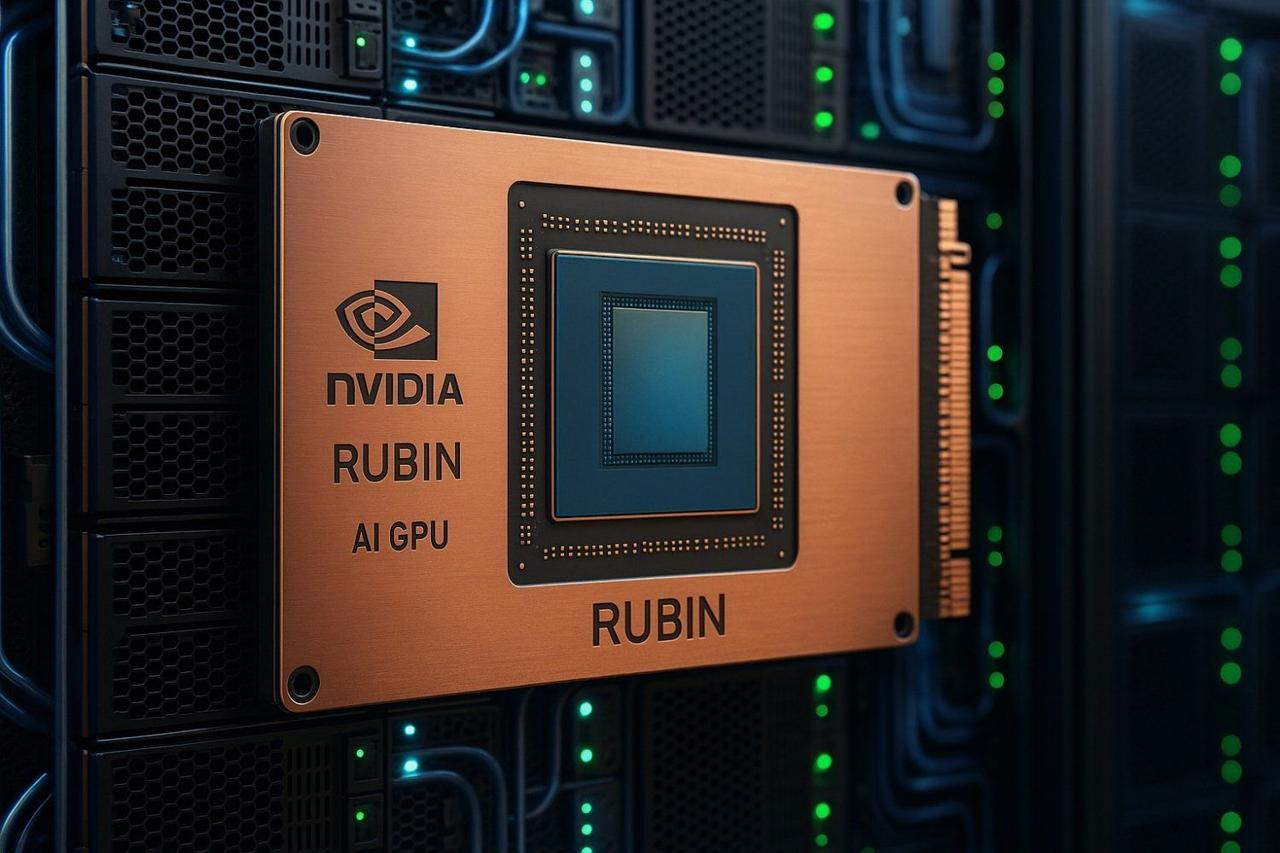
NVIDIA Accelerates Next-Gen 'Rubin' AI GPU Launch, Featuring Advanced 3nm Process and HBM4 Technology
04 Dec 2024•Technology

NVIDIA's Next-Generation Rubin AI GPUs Enter Production with HBM4 Memory Samples
09 Nov 2025•Technology
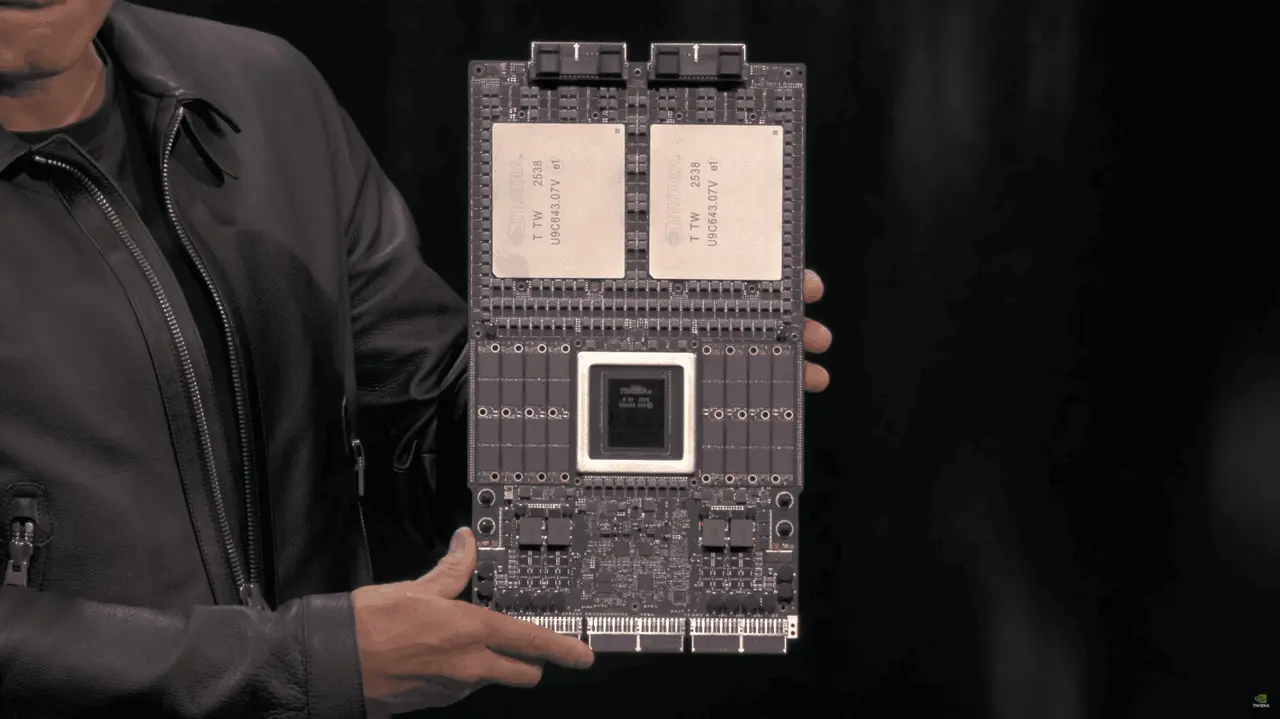
Recent Highlights
1
OpenAI releases GPT-5.2 AI model after code red memo targets Google's Gemini 3 threat
Technology

2
Disney invests $1 billion in OpenAI, licenses 200+ characters for Sora AI video generator
Technology

3
OpenAI faces wrongful death lawsuit after ChatGPT allegedly fueled murder-suicide tragedy
Policy and Regulation




